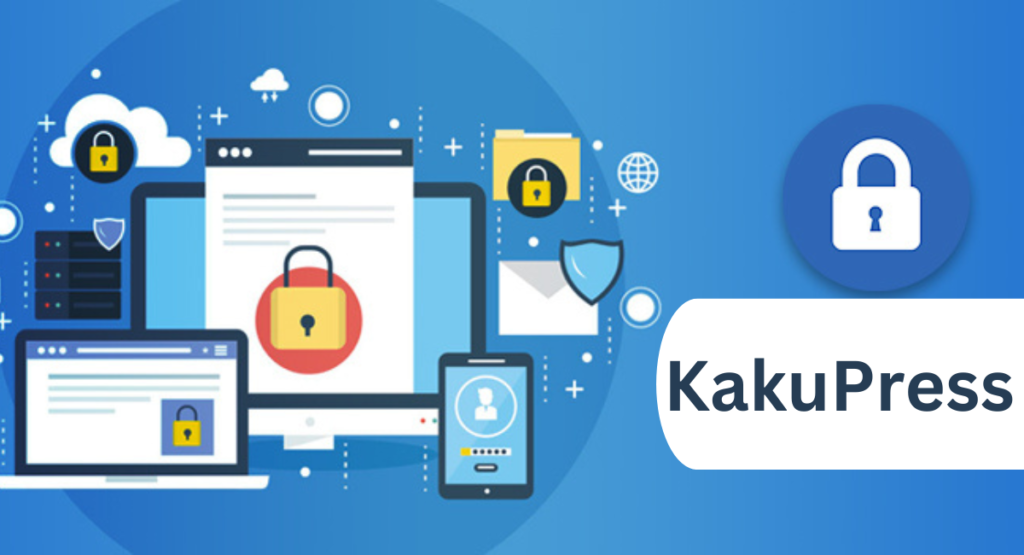In the rapidly evolving digital landscape, securing your website has never been more critical. For users of KakuPress, an emerging content management system (CMS), understanding and implementing robust security measures is essential to safeguarding your online presence. This comprehensive guide delves into KakuPress security, offering insights on protecting your website from vulnerabilities and ensuring a secure digital environment.
Introduction to KakuPress
KakuPress is a content management system designed to simplify website management while providing powerful features for customization and development. Like other CMS platforms, KakuPress offers a range of tools for building, managing, and optimizing websites. However, its growing popularity also makes it a target for cyber threats. Securing your KakuPress site involves understanding common vulnerabilities, implementing best practices, and using available security features effectively.

Common Types of Website Vulnerabilities
To protect your KakuPress site, it’s essential to recognize the common vulnerabilities that can affect any CMS:
- SQL Injection:
- Attackers inject malicious SQL queries into input fields, potentially accessing or manipulating the database.
- Mitigation: Use parameterized queries and prepared statements to avoid SQL injection.
- Cross-Site Scripting (XSS):
- Malicious scripts are injected into web pages, compromising user data or session information.
- Mitigation: Validate and sanitize user inputs and implement Content Security Policy (CSP) headers.
- Cross-Site Request Forgery (CSRF):
- Attackers trick users into making unwanted requests, exploiting their authenticated session.
- Mitigation: Use anti-CSRF tokens to ensure requests are from trusted sources.
- File Upload Vulnerabilities:
- Attackers upload malicious files to exploit file upload functionalities.
- Mitigation: Restrict file types, validate file contents, and implement secure file handling practices.
- Weak Authentication and Authorization:
- Insecure login mechanisms and inadequate user access controls can lead to unauthorized access.
- Mitigation: Implement strong password policies, multi-factor authentication (MFA), and role-based access controls.
- Outdated Software and Plugins:
- Using outdated versions of KakuPress or its plugins can expose your site to known vulnerabilities.
- Mitigation: Regularly update KakuPress core, themes, and plugins to the latest versions.
How KakuPress Security Can Help Protect Your Website
KakuPress Security offers a robust shield against potential threats. With advanced monitoring tools, it scans your website continuously. This ensures vulnerabilities are identified and addressed before they can be exploited.
The platform employs real-time alerts that notify you of suspicious activities. You’ll always stay one step ahead of cybercriminals looking to breach your site.
Additionally, KakuPress provides automatic updates for plugins and themes. This feature minimizes risks associated with outdated software, which is often an easy target for attackers.
With its user-friendly dashboard, managing security settings becomes effortless. You don’t need to be a tech expert to navigate the features effectively.
Moreover, KakuPress includes regular backups as part of its service package. This means if anything goes wrong, you can restore your website quickly without losing valuable content or data.
Also Read : Online Website Design Appkod | Instagram Marketing AppKod To Social Media
The Importance of Website Security
Website security is crucial in today’s digital landscape. With cyber threats on the rise, every website faces potential vulnerabilities that can be exploited.
A secure website protects sensitive information, such as customer data and financial transactions. A breach not only jeopardizes personal details but also damages your brand’s reputation.
Search engines prioritize secure sites in their rankings. This means investing in security measures can significantly enhance your visibility online.
Moreover, a resilient website builds trust with users. Customers are more likely to engage with a site that demonstrates commitment to safeguarding their information.
Ignoring security puts you at risk for severe consequences—data loss, downtime, and hefty recovery costs can all stem from a single vulnerability. Prioritizing website security isn’t just smart; it’s essential for long-term success and sustainability.
Best Practices for Securing Your KakuPress Site
- Keep Software Updated:
- Core Updates: Ensure you are using the latest version of KakuPress. Updates often include security patches that address vulnerabilities.
- Theme and Plugin Updates: Regularly update all installed themes and plugins. Many vulnerabilities arise from outdated extensions.
- Implement Strong Authentication Mechanisms:
- Password Policies: Enforce strong passwords with a mix of letters, numbers, and special characters. Consider using a password manager for generating and storing complex passwords.
- Multi-Factor Authentication (MFA): Add an extra layer of security by requiring additional verification methods, such as SMS codes or authentication apps.
- Use Secure Connections:
- SSL/TLS Certificates: Ensure that your site uses HTTPS by installing an SSL/TLS certificate. This encrypts data transmitted between the user’s browser and your server.
- Secure Communication: Avoid transmitting sensitive data over insecure connections, such as HTTP.
- Monitor and Restrict User Access:
- Role-Based Access Control (RBAC): Assign user roles based on their responsibilities and restrict access to sensitive areas accordingly.
- Activity Logging: Implement logging and monitoring tools to track user activity and detect suspicious behavior.
- Sanitize and Validate Input:
- Input Validation: Validate and sanitize all user inputs to prevent malicious data from being processed by your site.
- Output Encoding: Encode output data to mitigate XSS attacks.
- Secure File Uploads:
- File Type Restrictions: Restrict the types of files that can be uploaded to your server.
- File Scanning: Use security tools to scan uploaded files for malware and other threats.
- Backup Regularly:
- Automated Backups: Set up automated backups of your site’s files and database. Ensure backups are stored securely and are easily recoverable.
- Backup Testing: Regularly test your backups to verify their integrity and restoration process.
- Implement a Web Application Firewall (WAF):
- Firewall Protection: Use a WAF to filter and monitor HTTP requests, blocking malicious traffic and attacks.
- Cloud-Based WAFs: Consider cloud-based WAF services for additional protection and performance benefits.
- Secure Database Access:
- Database Credentials: Use strong, unique passwords for database access and avoid using default credentials.
- Database Encryption: Encrypt sensitive data stored in the database to protect it from unauthorized access.
- Educate Your Team:
- Security Training: Provide training for your team on security best practices, including recognizing phishing attempts and handling sensitive data.
- Regular Audits: Conduct periodic security audits to identify and address potential weaknesses.
Also Read : Innovative Insights Dow Jones FintechZoom | Charizard:Ttw47p-Wxcy= Pokemon
Implementing KakuPress Security Features
KakuPress offers several built-in features and settings to enhance your site’s security:
- Security Plugins:
- Plugin Selection: Choose reputable security plugins that offer features like firewall protection, malware scanning, and login protection.
- Configuration: Configure security plugins according to best practices and your specific security needs.
- Access Control Settings:
- User Roles: Define user roles and permissions within KakuPress to ensure that only authorized individuals can access certain areas of the site.
- Login Protection: Implement settings to limit login attempts and block suspicious IP addresses.
- Backup and Restore:
- Backup Solutions: Utilize KakuPress-compatible backup plugins or services to automate and manage backups.
- Restore Procedures: Familiarize yourself with the restore process to quickly recover your site in case of a security incident.
- Security Audits:
- Regular Scans: Schedule regular security scans to identify potential vulnerabilities and address them promptly.
- Security Reports: Review security reports and logs to stay informed about potential threats and site activity.
Conclusion
Securing your KakuPress site is an ongoing process that involves implementing best practices, leveraging built-in security features, and staying vigilant against emerging threats. By understanding common vulnerabilities and taking proactive measures, you can significantly reduce the risk of security breaches and ensure a safe online environment for your users.
From keeping software up-to-date and using strong authentication methods to implementing secure file handling practices and monitoring user access, each step contributes to a more secure KakuPress installation. Regularly reviewing and updating your security practices will help safeguard your site against potential threats and maintain the integrity of your digital presence.
Remember, the digital security landscape is constantly evolving, and staying informed about new threats and security advancements is crucial to protecting your KakuPress site effectively.
Also Read : totellthetruth0719@gmail.com | Nasik Fatafat
